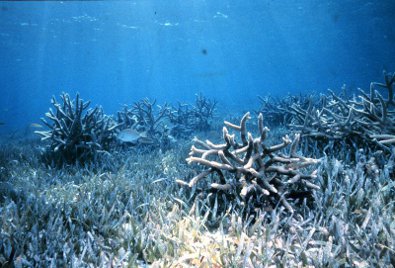An international team of experts have carried out the first global survey of seagrass species. The results, published in the Biological Conservation Journal, identify 15 of the 72 known species of seagrasses as threatened (Endangered, Vulnerable or Near Threatened), under criteria laid down by the International Union for Conservation of Nature (IUCN) Red List.
Seagrasses are not true grasses but marine flowering plants that grow on the ocean floor. They provide shelter and food to many species, such as dugongs and turtles. Like coral reefs, seagrasses play critical roles in the equilibrium of coastal habitats. Coral barrier reefs protect seagrass habitat from waves allowing the grass communities to develop. In turn, seagrasses reduce sediment in the water by trapping it and slowing water movement making the environment more suitable for coral growth.
According to the report, the main threat to seagrasses is human activity such as coastal construction, damaging fisheries practices, and mechanical damage from boats. Coastal communities including coral reef species are also negatively impacted by these activities.
EDGE has worked hard with international researchers to identify the most unique and threatened corals around the world in need or urgent conservation attention. The EDGE coral list was published at the beginning of this year and we are supporting conservation projects for ten of these species. Find out more about EDGE Coral Reefs and what you can do to help on our site.
CITATION:Short,F.T.; Polidoro,B.; Livingstone,S.R.; Carpenter,K.E.; Bandeira,S.; Bujang,J.S.; Calumpong,H.P.; Carruthers,T.J.B.; Coles,R.G.; Dennison,W.C.; Erftemeijer,P.L.A.; Fortes,M.D.; Freeman,A.S.; Jagtap,T.G.; Kamal,A.H.M.; Kendrick,G.A.; Kenworthy,W.J.; La Nafie,Y.A.; Nasution,I.M.; Orth,R.J.; Prathep,A.; Sanciangco,J.C.; van Tussenbroek,B.; Vergara,S.G.; Waycott,M.; Zieman,J.C. Extinction risk assessment of the world’s seagrass species.Biological Conservation (May 2011) doi:10.1016/j.biocon.2011.04.010
